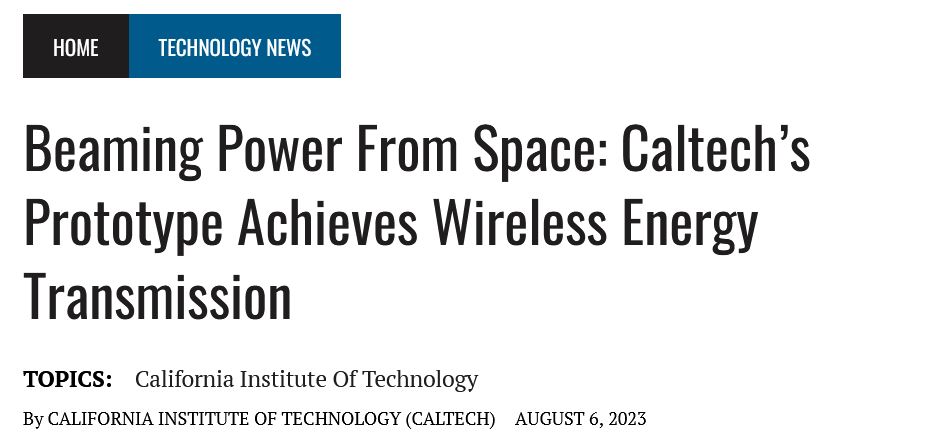
SciTechDaily: CalTech satellite beams energy from space.
A space solar power prototype, SSPD-1, has achieved wireless power transfer in space and transmitted power to Earth. The prototype, including MAPLE, a flexible lightweight microwave transmitter, validates the feasibility of space solar power, which can provide abundant and reliable power globally without ground-based transmission infrastructure.
This is one of those dangerous ideas that sound wonderful until you understand it.
Sunlight in space has much higher energy than the sunlight that reaches us. The atmosphere screens out gamma rays, x-rays, and most of the ultraviolet. That’s good because these high frequency waves of the electromagnetic spectrum would give us cancer and break down all organic molecules. Solar panels in space could capture much more energy than they do on the ground.
If that energy is captured and beamed down to the Earth, we are adding energy to our environment. The idea is analogous to putting mirrors in space to direct additional sunlight to ground-based solar panels. More solar energy would be added to our system, so the climate would warm up.
With only a couple of satellites, the warming would be negligible as a few power stations generate electricity and profit. When internal combustion engines were invented, nobody worried about adding carbon dioxide to the atmosphere. Beaming energy from space is not a utopian solution, but a bad idea.
The energy beam coming from the satellite would be focused and powerful. When the beam hits the target, electricity is generated. When the beam hits something else, it’s a death ray. Tesla wrote about this, and his papers remain classified. Interlocks would be installed to terminate the ray if it wonders. Those interlocks could be removed when a target needs to be destroyed. That makes beaming energy from space a dangerous idea.
Leave a Reply